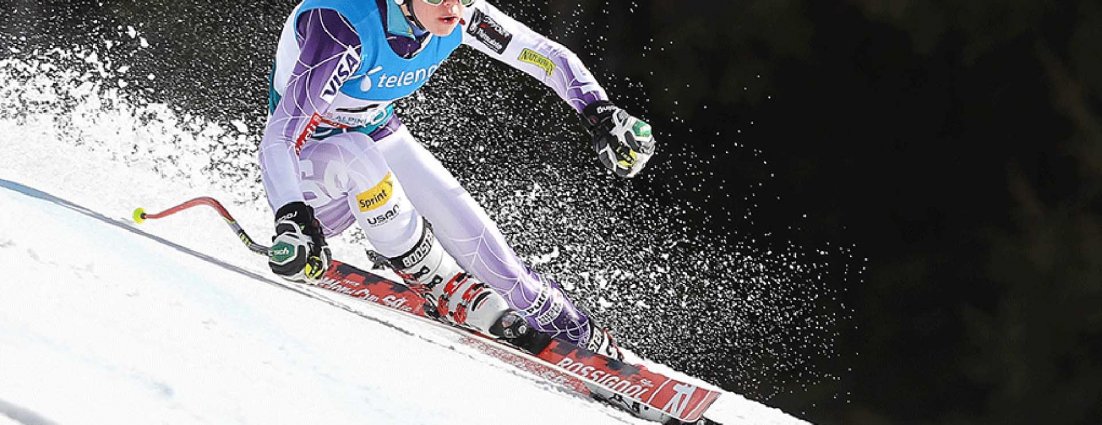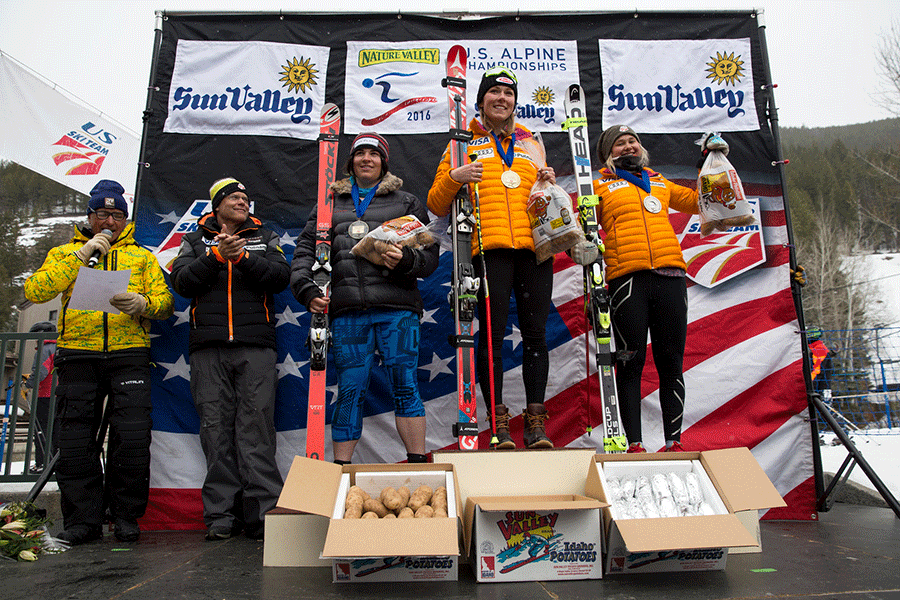All Roads Lead to Rome
02.08.2017 | Nastar Editor

Despite the fact that current U.S. Ski Team athletes Patricia “Tricia” Mangan and Cecily Decker grew up gritting it out along similar tracks at small Upstate New York ski clubs and have since become dependable teammates, the two weren’t close growing up.
“I wouldn’t have considered us friends at the time,” recalls Decker. The born and bred New Yorkers have raced against each other since they were under the age of 12, but only met when they were 13 and 14 since Decker skied in the eastern part of the state and Mangan the western division. “I could definitely tell [Tricia] was serious about skiing. I thought it was really cool this girl my age cared as much about her sport as I did,” remembers Decker. “We definitely kept an eye on each other at states – we were each other’s only competition back then.” The two athletes branched out from their home state one year apart from each other and have only just reunited this year as members of the U.S. Ski Team's C team.

As a self-proclaimed “weekend warrior” who was homeschooled with her twin brother William until high school, Mangan skied only three days per week through her sophomore year. “Holimont wasn’t as competitive as Burke or GMVS,” she explains. Although far removed from large resorts like Vail, Stratton or Squaw, Holimont supplied Mangan with a fairly unique set of skills, the kind of skills that enabled her to win the opening super G race at Junior Olympics (now known as the Eastern U16 Championships) with barely a handful of training days in the discipline.
“It’s really cool coming from New York having been so isolated from the rest of your competition. It let me improve on my own without being tempted to compare myself to everyone else like I may have at an academy,” reasons Mangan. “I never knew how I’d do at the bigger races. … Beat William and have fun: That’s all I thought about.”
After another strong season her sophomore year, Mangan accepted an invitation to attend the USSA TEAM Academy in Utah, and her journey in the sport away from New York took off.
Her now teammate Decker grew up with a ski patrol parent and started skiing at the age of two, but was also a weekend warrior like Mangan. “Among all the mountains I’ve been to, it’s still hard to find one as challenging as Whiteface,” Decker says. Although a larger program than Holimont, the NYSEF program at Whiteface had similar ideals to those of Holimont, notably the encouragement of free skiing and having fun. Decker remembers free skiing much more often than gate training even into her teenage years.
After demonstrating her potential on the regional level, Decker was invited to become a member of the National Training Group (NTG) as a first-year FIS athlete, and it was with that team that she got her first taste of bigger league competition.
“I went from USSA races in New York to FIS (International Ski Federation) competitions in Europe, Canada and all over North America. The level of competition definitely took some getting used to,” she admits. “New York taught me to focus on myself and what I had to do better rather than picking girls out that I knew I could or couldn’t beat. And when you enter such a large pool of talented girls, it’s really easy to get inside your own head.” Academics proved to be an asset in Decker’s development as a ski racer as the classroom provided another outlet for her focus and energy.
U.S. Ski Team women’s Europa Cup head coach Thomas Erhard first met Decker when she was a U12 (under the age of 12 years old as of January 1st of the competition season) and he was NYSEF’s interim program director. “She was a different character,” remembers Erhard. “People would sometimes misinterpret her, but I saw her for what she was: a fierce competitor.”
Meanwhile, he dubbed Mangan the “Female Bode” from the very first time he saw her ski. At least 10 years ago, he was at Holimont and remembers watching a little ripper carve beautiful turns. Both girls clearly lived up to their future coach’s predictions – however he’s only recently come to know and appreciate both girls out of their ski boots.
Mangan decided to begin her undergraduate studies at Dartmouth College this summer rather than ski in Ohau, New Zealand, a trip most hopeful World Cuppers would take in a heartbeat. Like Decker, who completed her summer conditioning in Lake Placid instead of Park City so she could be close to family and friends at home in the offseason, Mangan also believes in the benefits of balance. “I totally believe in them, and I’m patient and flexible enough to fight for whatever lifestyle they think is best for them,” said Erhard.
“Taking ownership in successes and failures is something I’ve never had to teach them,” he continued. Compared to athletes from bigger programs out west and from academies in the east, Decker and Mangan didn’t have many expectations as younger athletes. “They ended up loving the sport thanks to an inner, more personal passion than simply enjoying having [their pictures] taken on the podium.”
Last season, Decker won her career-first NorAm race, the opening downhill of the year at Lake Louise, and finished third in the NorAm downhill standings. She won the Williams Carnival GS at Jiminy Peak for an 18-point result and picked up a top-10 finish in the discipline at U.S. Nationals in Sun Valley. She was crowned National Junior downhill champion at Copper Mountain in March and also received the Don A. Metivier Golden Ski Award. Mangan pulled together podium finishes in both the super G and alpine combined races in Sun Valley at U.S. Alpine Championships along with a seventh-place finish in combined at World Junior Championships held in Sochi, Russia.
The independent yet parallel paths of these two upstate New Yorkers are proof that all roads can possibly lead to Rome. “If you really want to be fast and you’re willing to work hard, you’ll get there,” says Mangan. Coming from New York has presented both athletes with a particular set of obstacles and opportunities, and the right attitude has already helped them land on the first few of hopefully many podiums to come.